Introduction
Navigating the world with autism involves unique sensory experiences that can vary immensely from one individual to another. Understanding these sensory intricacies is vital for parents and educators, as it can influence the support and accommodations that children with autism may need. Recent research indicates a profound correlation between autism and synesthesia, a condition where sensory stimulation triggers an unrelated sensory response.
This overlap suggests that individuals on the autism spectrum are more likely to experience synesthetic perceptions. Additionally, the neurodiversity movement emphasizes that autism should be seen as a variation in functioning rather than a disorder. This perspective is gaining traction among scientists and the autistic community, prompting a more inclusive understanding of autism as part of the broader neurodivergent spectrum.
Strategies such as creating sensory-friendly environments, providing sensory tools and accommodations, developing routines and predictability, offering breaks and quiet spaces, and tailoring support to individual needs can make a world of difference in the lives of children with autism. By embracing the unique sensory profiles of children with autism, parents and professionals can foster a more supportive and understanding environment, facilitating better communication, learning, and personal growth for these children.
Understanding Sensory Differences
Experiencing the world with autism involves distinctive perceptual encounters that can differ greatly from one person to another. Some children may display an increased sensitivity to sights, sounds, or touch, while others might show less reactivity to input. These perceptual differences are crucial for parents and educators to comprehend as they play a significant role in how a child with autism perceives their environment.
Recent research indicates a deep connection between autism and synesthesia, a condition where stimulation triggers an unrelated response. This overlap suggests that individuals on the autism spectrum are more prone to synesthetic perceptions. Comprehending these intricacies of perception is crucial for caregivers, as it can impact the assistance and adjustments that children with autism may require.
Moreover, the neurodiversity movement emphasizes that autism should be seen as a variation in functioning rather than a disorder. This perspective is gaining traction among scientists and the autistic community, prompting a more inclusive understanding of autism as part of the broader neurodivergent spectrum which also includes conditions like ADHD and dyslexia. In fact, a 2023 systematic review revealed that 37% of children with ASD also presented with ADHD, highlighting the importance of recognizing multiple neurodivergences when providing support.
Researchers KD and EP are currently conducting an in-depth examination of 50 to 100 studies to analyze the perceptual encounters of children with autism. This review will carefully code data and organize it into descriptive and analytical themes, providing a more nuanced understanding of autistic children's experiences. This endeavor emphasizes the commitment to deepening our understanding of the perceptual aspects of autism from the perspective of those who experience it every day.
Creating suitable conditions and customized approaches can have a significant impact on the lives of children with autism. Resources such as the 'Talking is Teaching: Talk, Read, Sing' campaign and the global program 'Vroom' offer parents science-based tips to support their children's development. The UK's National Health Service also recommends using communication aids, which can be especially helpful for children with sensitivities related to the senses.
By embracing the distinct perceptual profiles of children with autism, parents and professionals can foster a more supportive and understanding environment, facilitating better communication, learning, and personal growth for these children.
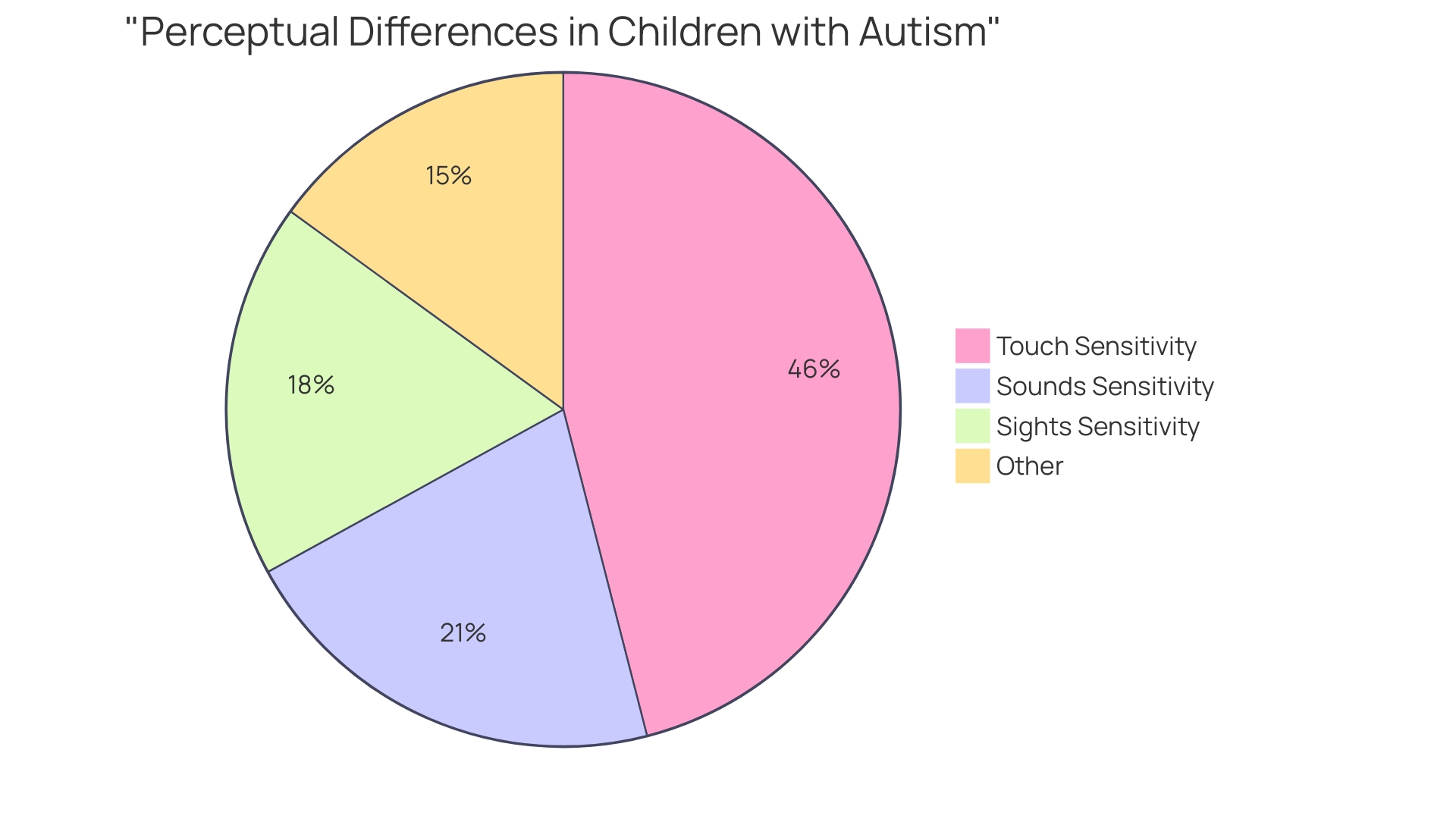
Common Triggers of Sensory Overload
For individuals with autism, navigating a world that is often loud, fast-paced, and chaotic can be incredibly challenging. Being overwhelmed with sensory input is a frequent occurrence for many individuals on the autism spectrum, where the mind is inundated with more sensory information than it can effectively process. This can be triggered by a variety of stimuli, including but not limited to, loud noises, bright lights, crowded spaces, strong smells, or certain textures. Recognizing these triggers is a critical step in creating a supportive environment.
'Recent research highlights the significance of comprehending the varied perceptual encounters of autistic individuals.'. By conducting in-depth analysis of the themes related to autistic children and young people's perspectives, specialists are unraveling the particular triggers related to the senses that might lead to discomfort or overwhelm, especially in open areas. Such triggers often include bright lights and loud noises, which are prevalent in places like shopping malls, schools, or public transportation.
The statistics are telling; 1 in 45 adults in the U.S. is diagnosed with autism spectrum disorder (ASD), highlighting the prevalence and the need for increased understanding and support. Moreover, studies have shown that auditory hypersensitivities can be particularly distressing, sometimes described as physically painful, impairing the ability to focus and interact with the environment.
As awareness expands, so does our understanding of how to better assist those with sensitivities to the senses. The community is discovering that neurodiversity, which encompasses a range of cognitive differences like ASD, ADHD, and dyslexia, impacts how people perceive and engage with the world. This understanding is empowering parents and professionals to recognize and reduce challenges related to sensation, aiding people with autism in leading more comfortable and fulfilling lives.
Creating a Sensory-Friendly Environment
Establishing a sensory-friendly setting is a crucial approach to aid individuals undergoing sensory overload. Instead of standard settings that can be overwhelming with their harsh lighting and loud noises, imagine a space where the lighting is subdued and soft, where noise-canceling headphones are readily available, and calming colors soothe the mind. A location where visual schedules guide people through their routines in a gentle, non-intrusive manner. Such thoughtful modifications to the physical environment are not just theoretical. Think about the situation of individuals with severe autism, for whom a visit to the dentist can cause extreme overload of the senses due to the intense lights, sounds, and unfamiliar sensations. Organizations like YAI are pioneering the use of AR/VR technology to transform such experiences into ones that are manageable and less stressful. Design Thinking, with its empathetic and collaborative approach, has been instrumental in healthcare to create such client-centered solutions. By involving all stakeholders, including those with sensitivities to the senses, more inclusive and comfortable environments are created. In educational settings, teachers are also recognizing the significance of addressing perceptual needs. By integrating strategies that consider all five senses, students can experience reduced anxiety and heightened focus. These practical solutions extend beyond the classroom. As an illustration, individuals with ADHD have expressed how input from the senses affects their everyday lives and the advantages of using specific earplugs that assist in regulating overpowering environmental noise without total separation. Philadelphia's endeavor to become the first inclusive city, with its dedication to training and providing resources for accessibility to the senses, is a testament to the growing awareness and commitment to supporting sensory needs. By taking into account the structure of our surroundings with sensitivities to the senses in thought, we can generate areas that are not just reachable but also favorable to the health and efficiency of all.
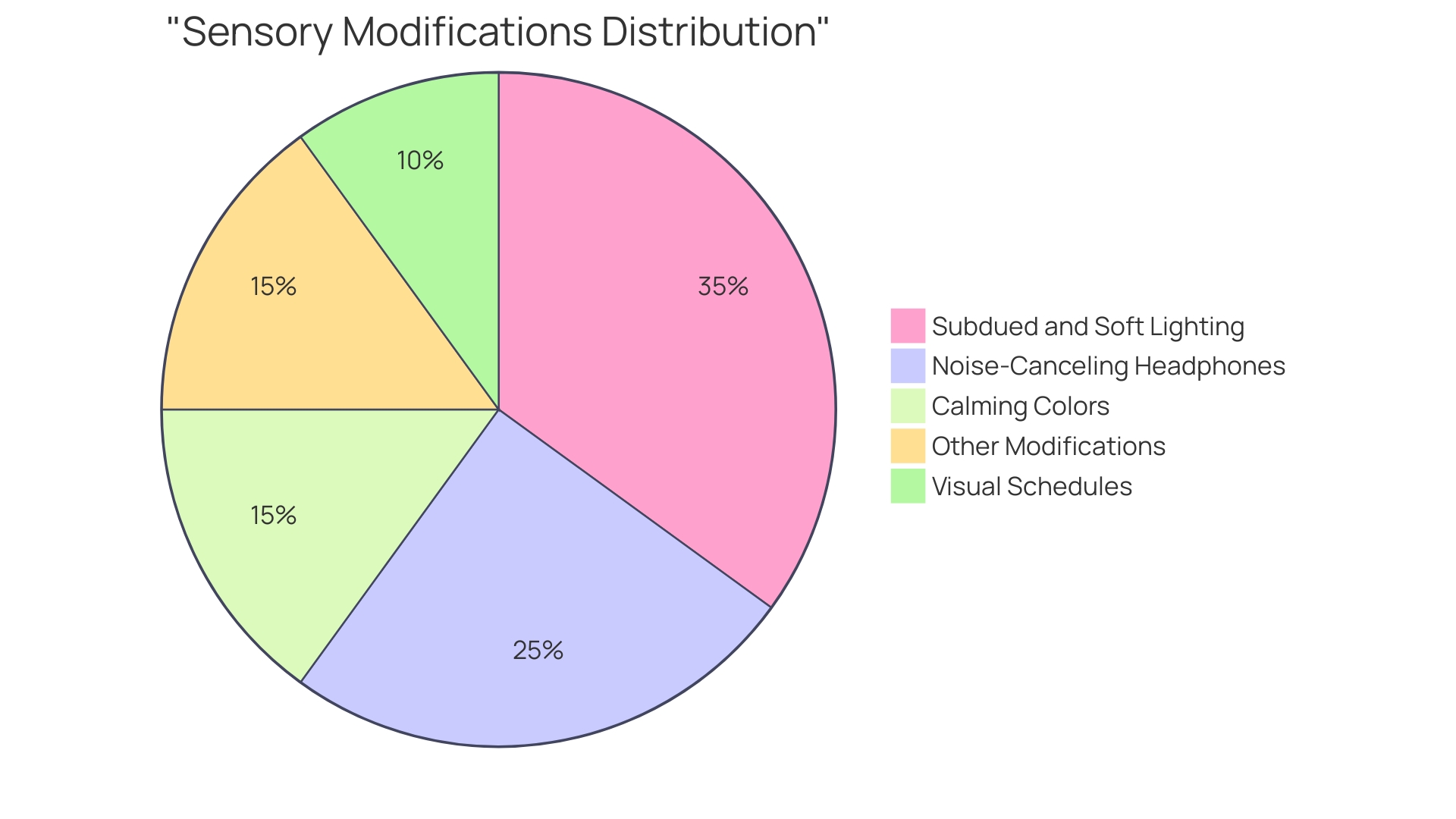
Strategies for Managing Sensory Overload
Navigating the rich world we inhabit can be a formidable task for individuals with sensitivities. It's akin to living in a perpetually loud, fast-paced environment that can leave one feeling perpetually overwhelmed. To combat this, one may crave a serene retreat to unwind, akin to taking a brief respite or a soothing holiday. Picture dealing with such overwhelming stimulation daily, with an elusive off-switch. This is the truth for many neurodivergent people, for whom the processing of senses can vary unpredictably, much like a metal detector scanning for signals of under- or over-stimulation. Command over one's environmental stimuli is not an overnight achievement; it's the culmination of years of identifying sensitivities and developing personalized coping strategies. When equilibrium is achieved, the rewards are manifold: improved sleep, stabilized moods, enhanced productivity, and a renewed joy in social interactions.
When creating personal plans to manage senses, it is crucial to adopt approaches that connect with the person's distinct requirements. Sensory breaks serve as a valuable tool, offering a momentary pause to recalibrate. Self-regulation techniques empower individuals to navigate their perceptual landscapes proactively. Deep pressure techniques can provide a comforting sense of security, grounding one amidst chaos. Moreover, relaxation techniques can serve as a pathway to serenity, assisting in reducing the noise of the world. For certain individuals, the search for comfort through the senses results in finding specific instruments such as Mack's silicone earplugs, which provide a fully secluded auditory haven, or Flare Calm earplugs that selectively block out noise frequencies, allowing interaction with surroundings while reducing its overpowering elements. By carefully customizing these approaches, one can convert difficulties related to the senses into a harmonious composition, allowing people to flourish in both their personal and work lives.
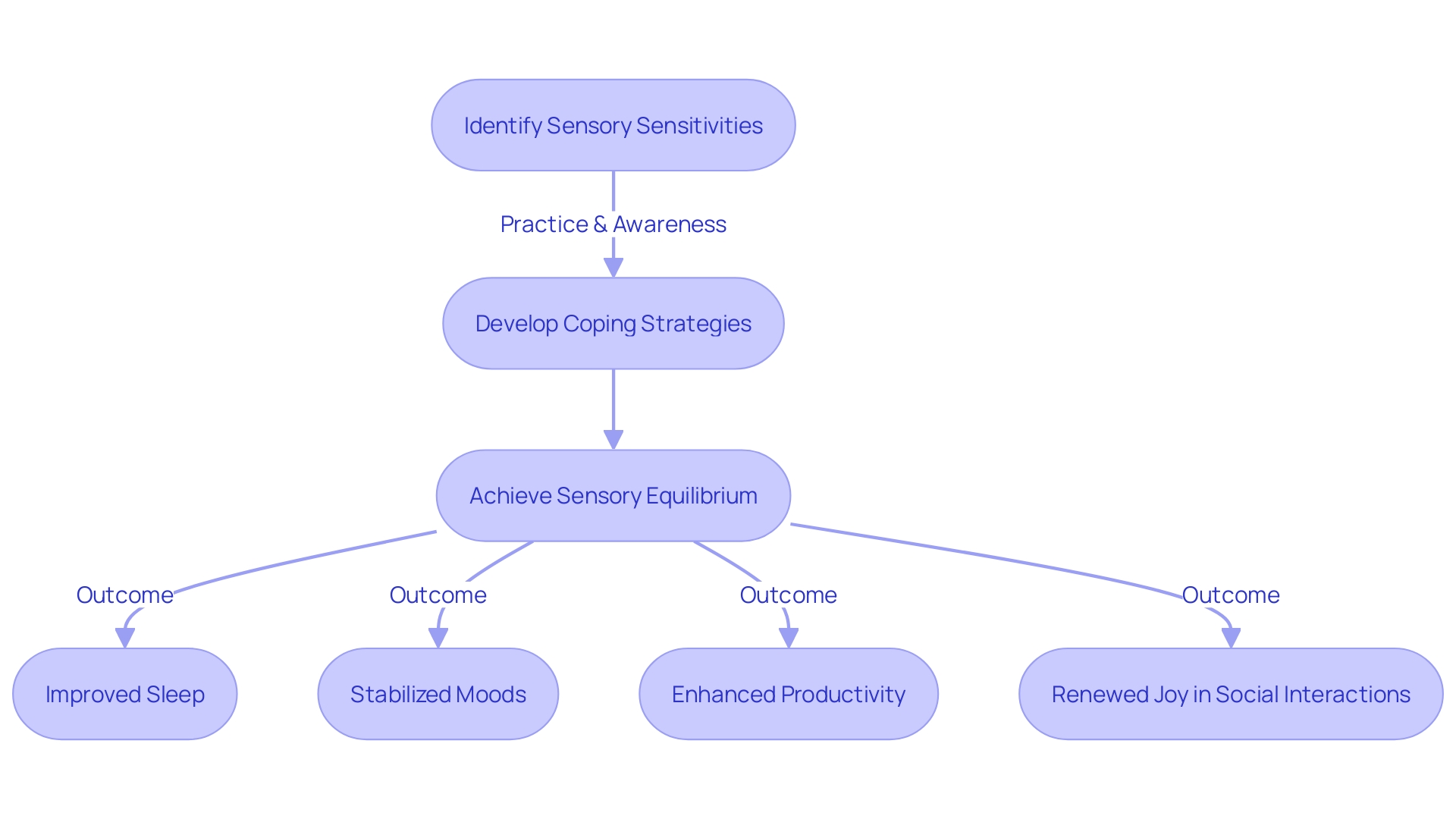
Providing Sensory Tools and Accommodations
Assisting people with sensitivities to stimuli entails establishing settings that are accommodating and pleasant. Sensory tools like fidget gadgets and weighted blankets can be life-changing for those who experience sensory overload. For example, integrating technology like noise-canceling headphones aids people in blocking out overwhelming auditory stimuli, allowing them to concentrate more effectively and experience a greater sense of relaxation in noisy settings.
Understanding the distinct requirements of people with autism is crucial when designing sensory-friendly spaces. For example, the Autism ASPECTSS Design Index offers evidence-based guidelines that emphasize the importance of considering acoustic elements in the environment. As highlighted by Dr. Temple Grandin, one of the key considerations is using LED lights that don't flicker, which can be particularly disruptive for those with visual sensitivities.
Innovative applications of technology are also showing promise in creating more inclusive experiences for individuals with processing disorders (SPD). For instance, the use of augmented and virtual reality (AR/VR) technology is being explored to transform dental visits for the autistic community, which are often fraught with sensory challenges. This demonstrates the potential of technology to create environments that are not only more accessible but also more engaging.
The incorporation of haptic feedback technology, which offers tactile sensations, has been gaining popularity as a means to generate multisensory encounters. Tactile images, like the ones produced by Baoxin Li and Kristel Puente for 'Color of the Blind,' enable people to 'sense' pictures, providing an inclusive and immersive encounter that surpasses visual perception.
These initiatives highlight the significance of personalized approaches to supporting needs related to the senses. Whether it's creating tactile representations of visual art for global study or utilizing RFID technology for interactive exhibitions, the goal is to facilitate engagement on a personal level. Every person's perception is distinct, and by recognizing this, we can offer the resources and adjustments needed for them to confidently navigate the world.
Developing Routines and Predictability
For individuals struggling with overload, incorporating structured routines and predictability into daily life is not just beneficial, it's transformative. By utilizing visual schedules, social stories, and clear expectations, individuals on the autism spectrum can improve their management of daily activities, decreasing anxiety and improving their capacity to handle challenges related to the senses. The feeling of stability that comes from routine can act as an anchor, helping to navigate the ebb and flow of stimuli.
Routine adaptation is a powerful strategy that extends beyond the comforts of familiarity; it's about building resilience. When routines intentionally include slight variations, it prepares people for unexpected changes, fostering adaptability. This is particularly relevant during periods like the holiday season, when routines are more prone to disruption. Through regular adjustment, individuals with processing sensitivities can learn to better manage shifts in their environment, ultimately leading to improved sleep, mood stability, productivity, and social interaction.
It is important to recognize that every individual's encounter with sensitivity to stimuli is distinct, resembling a metal detector oscillating between under- and over-stimulation. It requires patience and practice to identify personal triggers and develop personalized strategies to regulate them. The quest for mastering these strategies is not only about evading discomfort; it's about improving overall well-being and embracing the complete range of life's encounters.
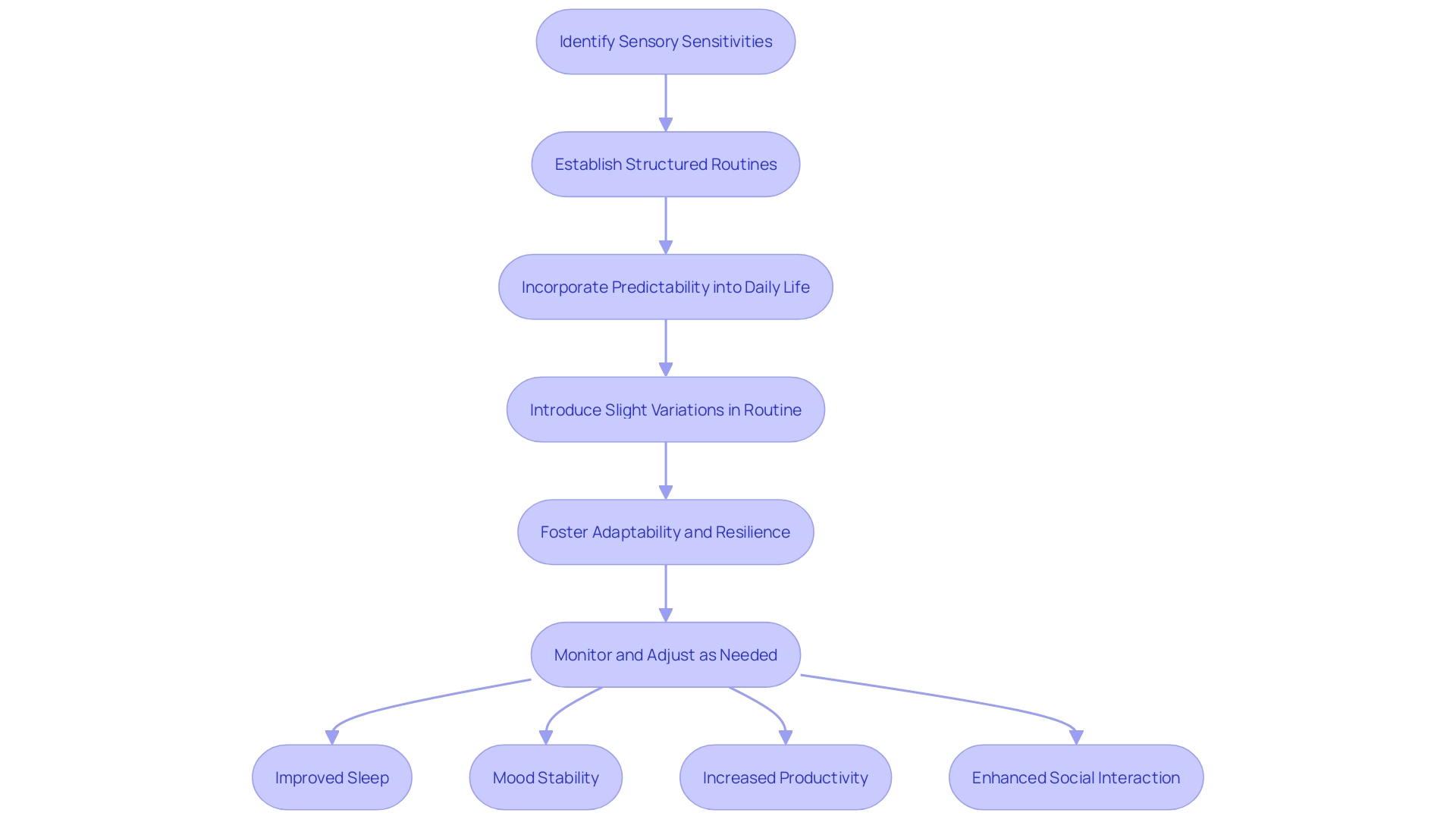
Offering Breaks and Quiet Spaces
Designing settings that accommodate sensitivities to stimuli is crucial for individuals who encounter overwhelming stimuli. By providing retreats from the bombardment of input, individuals have the opportunity to unwind and reset. The world we inhabit is often characterized by noise and rapid activity, which can lead to feelings of being swamped or drained. For many, these sensations are rare, but for some, they're a part of daily life, making it hard to find respite.
Philadelphia has taken a groundbreaking step by becoming the first inclusive city, acknowledging the needs of its population with sensitivities related to the senses. This innovative initiative acknowledges that almost one in six individuals have a disability related to the senses, highlighting the significance of accommodations for the senses.
Similarly, groundbreaking solutions like AR/VR technology are being investigated to revolutionize environments that usually provoke discomfort, such as dental clinics for people with autism. The integration of sensory-friendly design in digital spaces ensures that all users, especially those with autism, have equitable access to online resources and the ability to navigate them without being overwhelmed.
Furthermore, firsthand experiences from individuals with ADHD emphasize the successful management of input from the senses, which can result in enhanced quality of sleep, stability in mood, increased productivity, and improved social interactions. For example, Philadelphia's dedication to creating inclusive spaces and the stories of people who effectively handle their sensory requirements highlight the importance of surroundings that accommodate sensory needs.
Establishing calm environments and providing frequent pauses are effective approaches that enable people with sensitivities to flourish. By taking into account the various perceptual experiences of people, we can establish inclusive environments that cater to the complete range of sensory requirements.
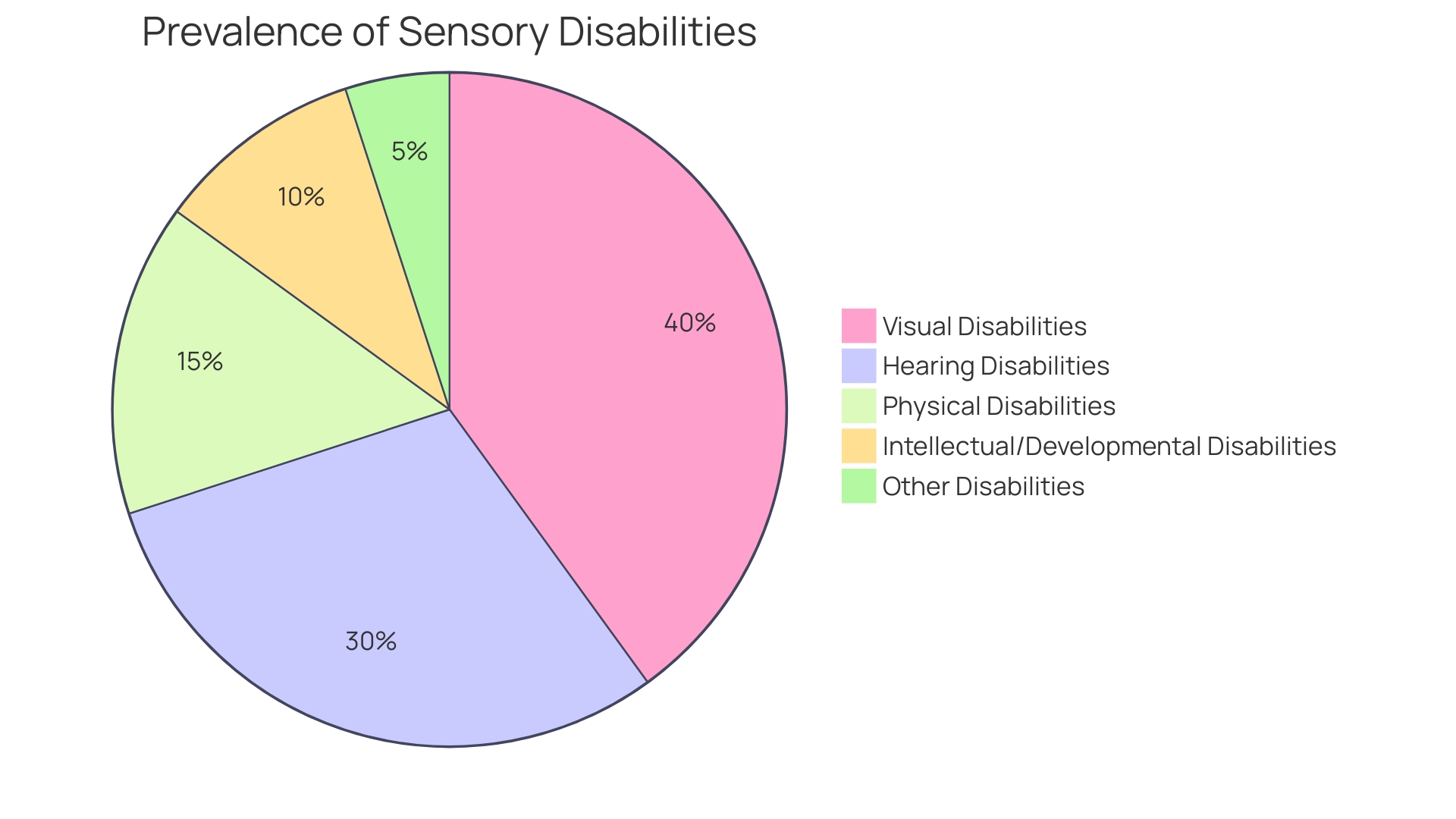
Tailoring Support to Individual Needs
Autism, a neurodevelopmental disability identified in about 1 in 36 children and 2.2% of adults nationwide, presents distinctive challenges related to the senses that affect everyday life. To effectively assist people with autism, it is crucial to comprehend their distinct needs and preferences related to their senses. One approach, TEACCH, emphasizes the importance of visual learning and consistency for those on the spectrum. By customizing learning settings with explicit visual schedules and established limits, individuals with autism can more effectively navigate their surroundings, lessening stress and overwhelming stimuli.
In the realm of healthcare, innovative strategies are being tested to create autism-inclusive environments. For example, YAI is leading the way in utilizing AR/VR technology to address challenges with processing disorder (SPD) in dental clinics, transforming potentially overwhelming situations into manageable ones. Similarly, Emirates and Dubai International Airport are proactively engaging with local schools and autism groups to offer rehearsal flying experiences, helping neurodivergent passengers acclimate to travel.
Furthermore, assessments and observations of responses to stimuli are crucial tools to tailor support strategies. These personalized adjustments are not only beneficial in educational settings but also in everyday public spaces, as demonstrated by the Autism Welcoming Initiative, which trains businesses to accommodate the needs of autistic patrons.
Indeed, the significance of accessible, inclusive, and universal design principles cannot be overstated. They ensure equal opportunities for autistic users to engage with digital and physical spaces. By giving priority to the requirements and perceptions of users, we not only promote a more comprehensive society but also improve the overall health and mental well-being of individuals with heightened sensitivities. Addressing sensory needs is more than creating comfort; it's about empowering individuals to thrive in a world that acknowledges and respects their sensory experiences.
Conclusion
In conclusion, understanding the sensory differences experienced by individuals with autism is crucial. Recent research shows a correlation between autism and synesthesia, highlighting the unique sensory perceptions of those on the spectrum. Recognizing autism as a variation in functioning promotes inclusivity within the neurodivergent spectrum.
Creating sensory-friendly environments, providing tools and accommodations, and establishing routines are effective strategies for supporting individuals with autism. These modifications, such as lighting adjustments and visual schedules, can create supportive spaces. Tailoring support to individual needs, such as personalized adjustments and visual learning, is essential for effective assistance.
By embracing the unique sensory profiles of children with autism and implementing these strategies, parents and professionals can foster a more supportive and understanding environment. This approach facilitates better communication, learning, and personal growth for children with autism. Understanding and accommodating sensory differences is key to ensuring the well-being and success of individuals on the autism spectrum.




